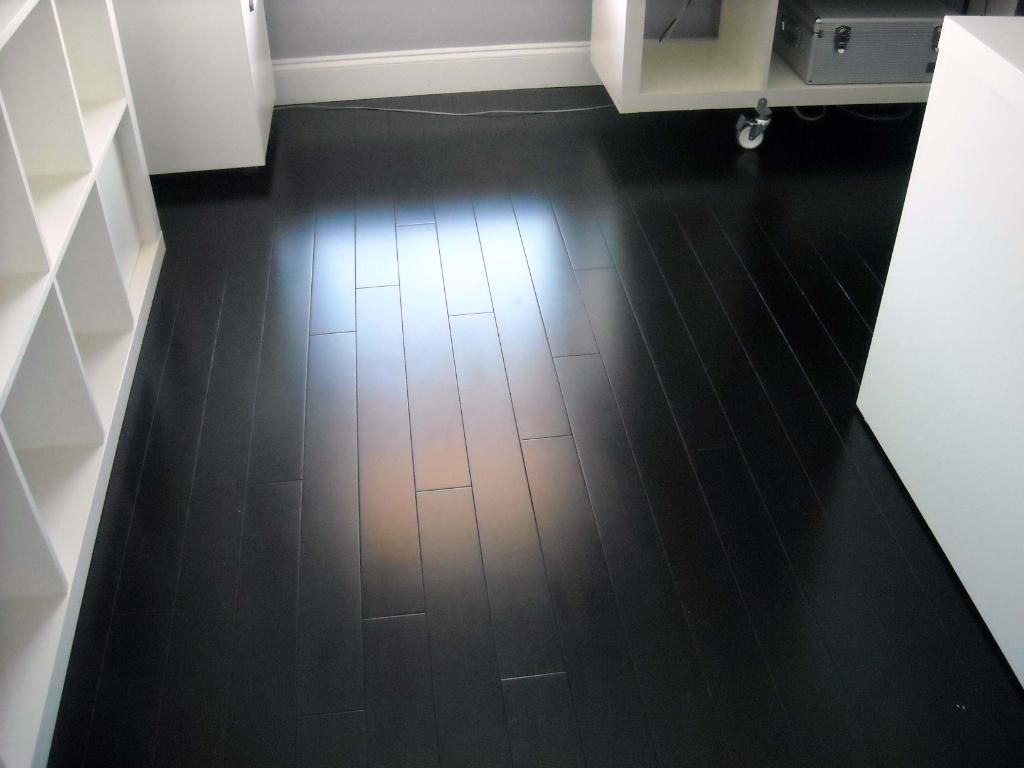Black hardwood floors have captivated the design world, offering a dramatic and sophisticated aesthetic. This guide explores everything from choosing the right style to maintaining their elegant appearance, providing valuable insights into this popular flooring choice.
Unveiling the Allure of Black Hardwood
Black hardwood floors make a powerful statement, adding depth and dimension to any room. They offer surprising versatility, working well with both modern minimalist and classic traditional designs. From deep ebony to smoky charcoal, these floors can transform a space, creating a sense of intimacy in larger rooms or enhancing spaciousness in smaller areas with strategic lighting.
- Types of Black Hardwood Floors:
- Naturally dark wood species (e.g., ebony, walnut)
- Stained lighter wood species (e.g., oak, maple)
- Engineered hardwood with black veneer
- Stained bamboo (a sustainable alternative)
Styling and Design with Black Hardwood
The versatility of black hardwood extends to a wide range of design possibilities. They act as a dramatic backdrop for lighter walls and furniture, creating striking contrasts. This rich color also highlights the wood’s natural texture and grain, adding warmth and character.
Black farmhouse designs can incorporate black hardwood floors to create a historically rich and modern feel. Similarly, black siding houses can complement their exterior with the interior elegance of black hardwood flooring.
Practical Considerations and Maintenance
While visually stunning, black hardwood floors require specific care to maintain their beauty. Regular sweeping or vacuuming with a soft brush attachment is essential to prevent dirt and grit from scratching the surface. Occasional mopping with a cleaner specifically designed for hardwood floors is also recommended.
- Durability: While generally durable, the lifespan of black hardwood floors depends on the wood species, construction, and finish. Engineered hardwood offers enhanced moisture resistance, making it suitable for kitchens and bathrooms.
- Maintenance: Dust and scratches are more noticeable on black floors, requiring slightly more frequent cleaning.
- Finish: A high-quality polyurethane finish protects against wear and tear, while a satin or matte finish can help minimize the appearance of imperfections.
Advantages and Disadvantages of Black Hardwood
Like any flooring choice, black hardwood comes with its own set of pros and cons:
Pros:
- Visual Impact: Creates a dramatic and sophisticated atmosphere.
- Design Flexibility: Adaptable to various design styles and color palettes.
- Durability: Hardwood is inherently long-lasting, especially with proper care.
- Moisture Resistance (Engineered): Engineered options offer excellent protection against humidity.
- Timeless Style: A classic choice that adds value to a home.
Cons:
- Cost: Certain species and high-end finishes can be expensive.
- Upkeep: Requires more frequent cleaning than lighter floors.
- Visibility of Scratches: Minor scratches and dust are more apparent.
Addressing the Ebony Misconception
While often referred to as “ebony,” most black hardwood floors aren’t made from true ebony wood, which is rare and costly. The black color is typically achieved through staining, allowing for a wider range of wood species and price points.
The Trend Factor: Are Black Hardwood Floors Still In Style?
Black hardwood floors have transcended fleeting trends, becoming a timeless design element. Their enduring popularity suggests they will likely remain a stylish choice for years to come. While trends may shift towards lighter wood tones periodically, the dramatic elegance of black flooring retains its classic appeal and potential to boost resale value.
Cleaning and Care: Debunking the Difficulty Myth
While black hardwood floors might show dust and debris more readily, they aren’t necessarily harder to clean. Regular maintenance is key. Here’s a recommended cleaning routine:
| Task | Frequency | Tools/Materials |
|---|---|---|
| Sweeping/Vacuuming | Daily/Every Other Day | Soft-bristled broom or vacuum with a soft brush head |
| Dry Mopping | Every Few Days | Microfiber dry mop |
| Damp Mopping | As Needed | Microfiber mop, wood floor cleaner (specifically for dark wood) |
| Spill Cleanup | Immediately | Soft cloth |
Ongoing research suggests that certain wood species with closed grains, like some types of walnut, may show scratches less than others. It’s a factor to consider when choosing your flooring.
Mitigating the Downsides of Dark Wood Floors
While dark floors can make a room appear smaller if not properly lit, strategic lighting and lighter furnishings can create balance and even enhance the feeling of spaciousness. Choosing a matte or satin finish can also minimize the visibility of dust and scratches.
Sustainability and Eco-Friendly Choices
For eco-conscious homeowners, sustainably harvested wood and bamboo offer renewable alternatives for achieving the black hardwood look.
Unlocking the Design Potential
Black hardwood floors provide a versatile foundation for various design schemes. Consider these creative ideas:
- DIY Transformation: Stain existing hardwood floors black for a cost-effective refresh.
- Professional Restoration: Rejuvenate older black hardwood floors with professional cleaning and restoration services.
By understanding the nuances of black hardwood floors, from their inherent beauty to their maintenance requirements, you can make an informed decision about whether this dramatic and stylish flooring option is the right choice for your home.
- How to Get Rid of Mushrooms in Your Lawn: A Complete Guide - April 24, 2025
- How to Get Rid of Ground Hornets: A Safe and Effective Guide to Eliminating Nests - April 24, 2025
- How to Get Rid of German Roaches Fast: DIY Methods for Quick Control - April 24, 2025










